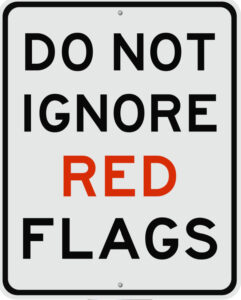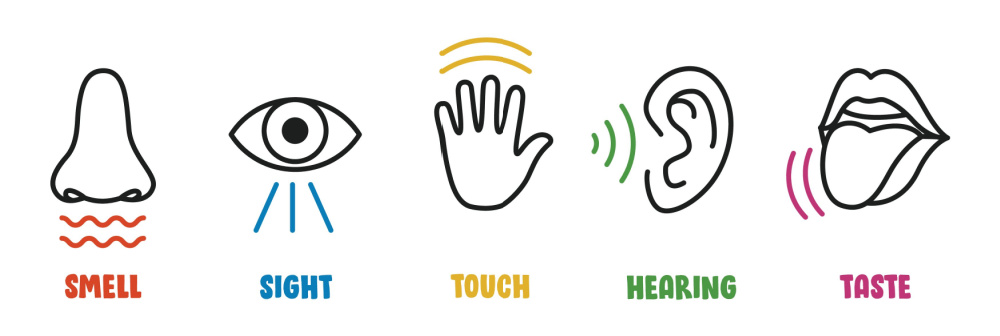This is the fourth installment in a series of blogs addressing planning for the future. Previous installments include: Aging Safely in Your Own Home: A Comprehensive Guide, Senior Living Options: In-Home Care vs. Assisted Living, and Legal Considerations and Aging. Later topics will include: Is it Time for Memory Care, Caregiving from a Distance: Strategies for Nurturing From Afar, and Navigating the Caregiver Journey: Resources and Practical Suggestions.

When it comes to nursing homes, it’s essential to be aware of potential red flags that may indicate substandard care or other concerning issues. From my experience seeing clients in residential facilities, many of the issues boil down to inadequate staffing levels and high staff and management turn-over. When evaluating a residential facility for your loved one, use your 5 sense.

1. Smell
Does it smell clean or are there unpleasant odors?
2. Sight
Does it look clean, are residents and staff engaged? Arrive unannounced and see if it appears the same as at scheduled visits. If your loved one is already in a residential facility, visit regularly on different days (weekday vs weekend) and at different times.
3. Touch
Does it “feel” clean; would you sit on the chairs, eat at the table, sleep in the beds?
4. Hearing
Do you hear generation appropriate music? Do you hear residents engaged in conversations with other residents or staff? Is it too quiet or too noisy?
5. Taste
Visit at mealtime. What does the food taste like? Is it healthy as well as tasty? I have seen a resident gain 100 pounds after moving to an assisted living facility because intake was not monitored and the facility served dessert with every meal as well as sweets for snacks and plates of fresh baked cookies always available in the lobby. Remember older sedentary folks have lower calorie requirements.

Red Flags
If you observe any of these red flags or have concerns about the care provided in a residential facility, it’s crucial to address them promptly. Discuss them with the facility administration as soon as possible. If your concerns are not appropriately addressed, report them to the appropriate authorities.
Poor hygiene
Hygiene concerns can hit you as soon as you walk in the door. The smell of urine is an indication that residents’ hygiene needs are not being attended to promptly. This could be due to inadequate staffing or apathetic staff. Whatever the reason, it is a big red flag. Even if odors are not present, observe the general cleanliness of the facility, including the residents’ rooms, bathrooms, and common areas.
Lack of appropriate social engagement
Observe if residents appear isolated, lonely, or ignored. At 10am are residents still in bed rather than participating in group activities? Social interaction and engagement is crucial for well-being. Every facility I have ever been in has a list of exciting sounding activities. Some have schedules that change daily, weekly, or monthly and are posted in common areas. BUT in some cases, the posting is as far as it goes. These activities may or may not actually occur. Try to visit when activities should be happening and ask to take a peek. Notice, for example, if the chair exercise class facilitator is engaging? Is there music playing or is the facilitator simply counting to 10 repeatedly? Are the activities appropriate for the age, interest, and abilities of the residents?
Unexplained injuries or bruises
Be vigilant about unexplained injuries, bruises, or other physical signs of abuse. Frequent accidents or injuries may indicate negligence or mistreatment by the staff.
Poor communication
Lack of transparency or evasive answers to your questions by staff members can be a red flag. Clear and open communication is essential to address concerns and ensure the well-being of residents. You should get a call immediately if your loved one sustains an injury or fall.
Restricted visitation
While some restrictions on visitation may be necessary due to specific circumstances, an excessively strict visitation policy could be a cause for concern. It can indicate a lack of transparency. It’s important for residents to have regular contact with their loved ones.
Unresponsive or disrespectful staff
Pay attention to the staff’s responsiveness to residents’ needs. If you notice that calls for assistance go unanswered or there is a lack of attention and care provided to residents, it may indicate understaffing or neglect. Do the staff appear overworked and frazzled?
High management and/or staff turnover
Research published in the journal Health Affairs in March 2021 states that the median rate of staff turnover at nursing homes is about 94%. A turnover rate is the percentage of employees who leave a place of employment over the course of a year. High turn-over can be an indication of poor working conditions. Whatever the reason, turn-over is disruptive to residents.
Malnutrition or dehydration
Look out for signs of malnutrition or dehydration among the residents. Weight loss, lethargy, dry skin, and sunken eyes can be indicators of inadequate nutrition and hydration.
Medication mismanagement
Improper administration or management of medications can have serious consequences for residents’ health. Keep an eye out for signs of missed doses, incorrect dosages, over-medication, or other medication-related issues.
Unresponsive residents
If many residents during your visit seem unresponsive, it may be because some have been prescribed/over-prescribed antipsychotic medication without an underlying condition that warrants such drugs. This can be a sign that the facility is understaffed and resorting to these medications as a way to curb behaviors that are challenging for staff to handle.
Legal or regulatory violations
Research the nursing home’s compliance history and check for any reported violations or citations. Frequent or serious violations can be indicative of ongoing problems within the facility. Request a copy of the annual state survey and, if relevant, copies of complaint investigations. Complaints that led to investigations could be a red flag.
REFERENCES
Did you find this topic interesting? Below are more in depth articles.
- Nursing Home Red Flags You Should Watch Out for – US News (When comparing nursing homes for a loved one, diligence is key. Be on the lookout for the telltale signs of a poor nursing home facility.)
- Things Nursing Homes Don’t Want You to Know – US News (Who actually owns the nursing home? How’s staffing at night? Some issues are less transparent than others.)
- 5 Star Quality Rating System – Centers for Medicare and Medicaid Services
Joanne Bedwell, PT is the Resident Blogger at Be Active Be Well. She lives and works in San Francisco with her husband and two (almost) grown daughters. Having over 25 years of experience as a PT, she sees clients in their homes and teaches fitness classes in person and virtually.
DISCLAIMER: This article contains information that is intended to help the readers be better informed regarding exercise and health care. It is presented as general advice on health care. This article is not intended to be a substitute for the medical advice of a licensed physician. The reader should consult with their doctor in any matters relating to his/her health.




